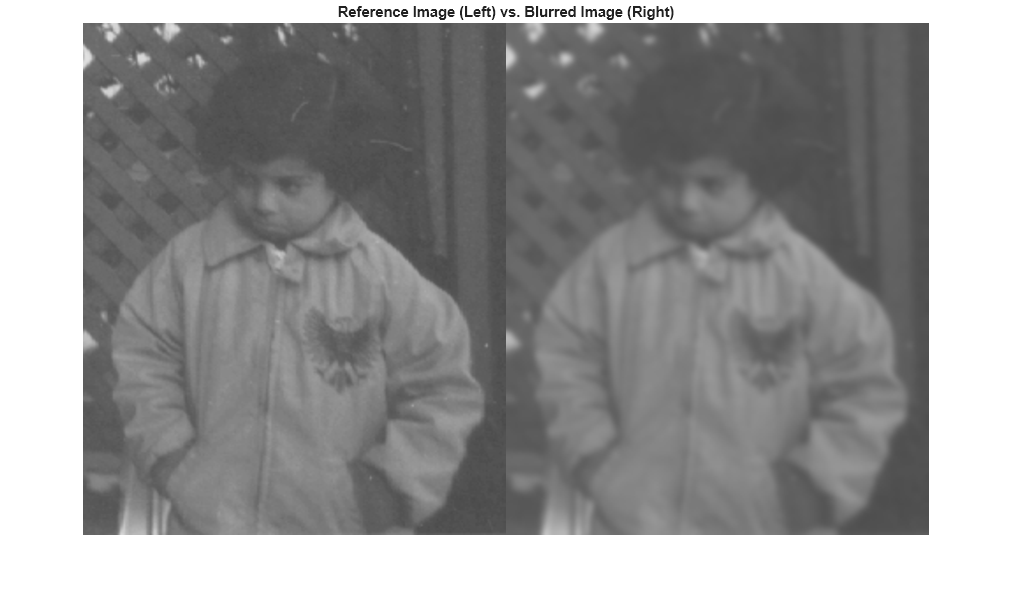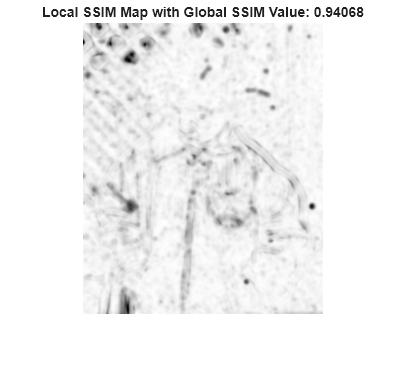ssim
Structural similarity (SSIM) index for measuring image quality
Description
ssimval = ssim(A,ref,Name,Value)
Examples
Input Arguments
Name-Value Arguments
Output Arguments
More About
Tips
Algorithms
The SSIM Index quality assessment index is based on the computation of three terms, namely the luminance term, the contrast term and the structural term. The overall index is a multiplicative combination of the three terms.
where
where μx, μy,
σx,σy, and σxy
are the local means, standard deviations, and cross-covariance for images x,
y. If α = β = γ = 1 (the default for Exponents), and
C3 = C2/2 (default selection of
C3) the index simplifies to:
When you specify a noninteger value for "Exponents", the
ssim function prevents complex valued outputs by clamping the
intermediate luminance, contrast, and structural terms to the range [0,
inf].
References
[1] Zhou, W., A. C. Bovik, H. R. Sheikh, and E. P. Simoncelli. "Image Quality Assessment: From Error Visibility to Structural Similarity." IEEE Transactions on Image Processing. Vol. 13, Issue 4, April 2004, pp. 600–612.
Extended Capabilities
Version History
Introduced in R2014aSee Also
psnr | immse | multissim | multissim3
Topics
- Compare Image Quality at Various Compression Levels
- List of Functions with dlarray Support (Deep Learning Toolbox)
- Define Custom Training Loops, Loss Functions, and Networks (Deep Learning Toolbox)


